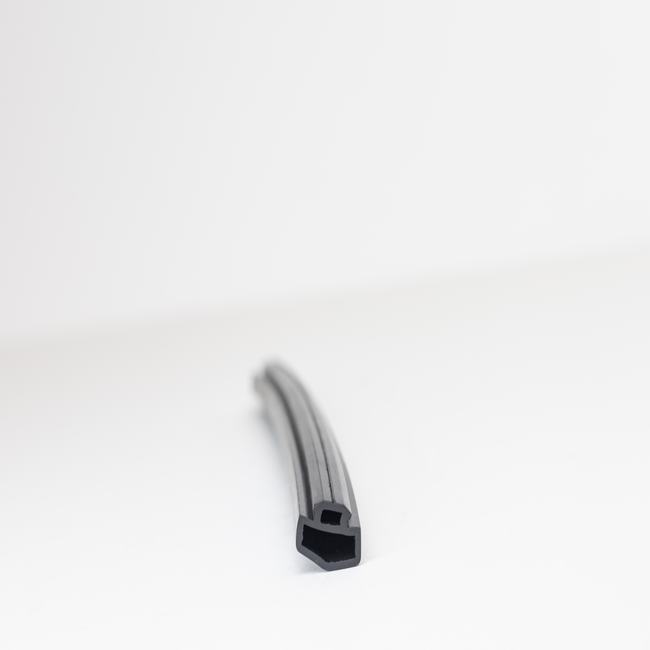Steel door seals, also known as door weatherstripping or door gaskets, are essential components used in architectural, commercial, industrial, and residential applications to provide a tight and secure seal around steel doors. These seals serve a multifaceted purpose, contributing to energy efficiency, security, noise reduction, and overall comfort within a building. In this detailed description, we’ll explore the various aspects and benefits of steel door seals.
Purpose and Function:
Steel door seals are primarily designed to create a weather-tight and airtight barrier around the perimeter of a steel door. Their primary functions include:
- Weather Protection: Steel door seals effectively prevent the infiltration of external elements such as rain, wind, dust, and drafts, ensuring the interior of a building remains comfortable and dry.
- Energy Efficiency: By sealing gaps and preventing air leakage, these seals help in maintaining consistent indoor temperatures, reducing energy consumption, and consequently lowering heating and cooling costs.
- Sound Insulation: Steel door seals contribute to noise reduction by sealing gaps that can allow sound to enter or exit a building. This is particularly important in sound-sensitive environments such as recording studios, offices, and residential spaces.
- Security: Steel door seals improve the overall security of a building by ensuring that the door remains tightly sealed, making it more difficult for unauthorized individuals to gain entry.
Types of Steel Door Seals:
Steel door seals come in various types, each tailored to specific applications and performance requirements. These types include:
- Magnetic Door Seals: These seals use magnets to provide a secure and airtight seal when the door is closed. They are commonly used in residential settings to improve insulation and reduce drafts.
- Compression Seals: Compression seals use a flexible material, such as rubber or foam, to compress against the door frame when the door is closed. This type is effective at sealing gaps and preventing air and water infiltration.
- Adhesive-backed Seals: These seals have an adhesive backing that allows them to be easily affixed to the door or door frame. They are convenient for retrofitting doors to improve their sealing properties.
- Drop Bar Seals: Often used in commercial and industrial applications, drop bar seals drop down to seal the gap between the door and the floor when the door is closed. They are effective in preventing drafts, pests, and debris from entering.
Design and Materials:
Steel door seals are manufactured using a variety of materials to suit different purposes and environmental conditions. Common materials include rubber, silicone, neoprene, polyurethane, and foam. The choice of material depends on factors such as the desired level of sealing, resistance to weather and UV exposure, and the intended application.
The design of steel door seals incorporates flexibility and resilience to ensure a tight seal when the door is closed, yet the material should spring back to its original shape when the door is opened.
Installation and Maintenance:
Proper installation is critical to the effectiveness of steel door seals. They should be carefully positioned and secured to ensure they create a continuous seal around the door. Regular maintenance involves inspecting the seals for wear and damage, as well as cleaning and lubricating them to ensure their longevity and performance.
Applications:
Steel door seals are widely used in various applications, including:
- Residential Doors: Steel door seals are commonly employed in exterior doors of homes to maintain comfort, reduce energy costs, and enhance security.
- Commercial and Industrial Buildings: They are used in entry doors, fire doors, and loading dock doors to improve energy efficiency, security, and weather protection.
- Soundproofing: In recording studios, theaters, and sound-sensitive spaces, steel door seals play a crucial role in reducing sound transmission.
- Refrigeration and Cold Storage: In cold storage facilities, steel door seals are essential for maintaining temperature integrity and preventing the entry of warm air.
Benefits:
The use of steel door seals offers several significant benefits:
- Energy Efficiency: They contribute to reduced energy consumption and lower utility bills by preventing heat loss in the winter and heat gain in the summer.
- Improved Comfort: By eliminating drafts, noise, and moisture infiltration, steel door seals create a more comfortable indoor environment.
- Security: Steel door seals enhance security by sealing gaps that intruders could exploit and by preventing unauthorized access.
- Longevity: Properly installed and maintained steel door seals can extend the lifespan of doors and the overall building envelope by protecting against weather-related damage.
In conclusion, steel door seals are vital components in building construction, offering numerous advantages related to weather protection, energy efficiency, security, and comfort. Their versatility in various applications and their effectiveness in sealing gaps and preventing air and water infiltration make them an indispensable part of architectural and industrial design.


